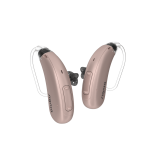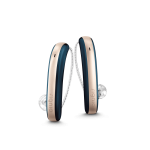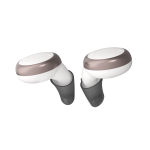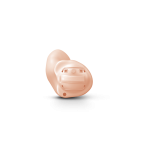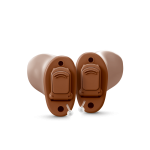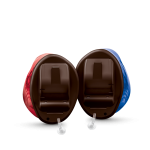How Loud Is Too Loud? Understanding Safe Noise Levels

How Loud Is Too Loud? Understanding Safe Noise Levels
We are always surrounded
by noise in the modern world. The sound is all around us, whether it be in
concerts, crowded city streets, or even when we use headphones every day. How
loud, though, is too loud, do you ever wonder? Understanding acceptable noise
levels is essential to safeguarding our hearing against noise-induced hearing loss, which is a common problem. This blog explores the topic of decibels and
how they affect our ears, offering tips on how to listen safely.
Understanding Decibels:
We must first comprehend
the measurement of sound strength, which is expressed in decibels (dB), before
we can understand safe noise levels. Since the decibel system is logarithmic, a
tenfold increase in sound intensity corresponds to every 10 dB rise. A sound at
20 dB, for instance, is ten times more intense than one at 10 dB.
Now, let's explore the range of decibels:
0-30 dB: This range is
considered safe for hearing and includes faint sounds like rustling leaves,
whispers, and a library's quiet ambiance.
30-60 dB: Common
environmental noises, such as normal conversation, a television at a moderate
volume, and rainfall, fall within this range. These levels are generally safe
for extended exposure.
60-90 dB: This is where
caution is warranted. Sounds in this range include heavy traffic, power tools,
and concerts. Prolonged exposure can lead to hearing damage.
90-120 dB: Here, we
encounter potentially harmful noise levels. Rock concerts, chainsaws, and
sirens fall within this range. Even short exposure can cause harm.
120+ dB: Sounds like jet
engines, fireworks, and gunshots are dangerously loud. Immediate exposure can
damage hearing, and protection is crucial.
How Noise Affects Your Ears:
When sound waves enter our
ears, they pass through the ear canal and reach the eardrum. These vibrations
are transferred to tiny hair cells within the cochlea. The hair cells move,
generating electrical signals that are sent to the brain, where we perceive
sound. Exposure to loud noises can damage or destroy these hair cells, leading
to noise-induced hearing loss.
Safe Noise Levels:
It's vital to be mindful
of the duration of noise exposure at different decibel levels. The National
Institute for Occupational Safety and Health (NIOSH) and the World Health
Organization (WHO) provide guidelines for safe noise exposure:
85 dB: This is considered
the threshold for safe exposure. However, the duration matters. Prolonged
exposure at or above this level can lead to hearing damage. NIOSH recommends an
exposure limit of 85 dB for 8 hours.
88 dB: When the sound
level increases to 88 dB, the safe exposure time is reduced by half. This means
you can be safely exposed to this level for 4 hours.
91 dB: At 91 dB, your
safe exposure time is only 2 hours.
94 dB: A sound level of
94 dB reduces your safe exposure time to just 1 hour.
97 dB: At 97 dB, safe exposure is limited to 30 minutes.

Listening Safely to Music:
In our digital age,
listening to music is a common activity. However, how you listen matters. The
World Health Organization provides guidelines for safe listening to music
through personal audio devices:
Volume: Keep the volume
at or below 60% of the maximum level on your device. When listening through
headphones, you should still be able to hear ambient sounds.
Duration: Limit your
listening time to 60 minutes at a stretch. Take a break between sessions.
Use Noise-Canceling
Headphones: Noise-canceling headphones can help block external sounds, allowing
you to lower the volume.
Hearing Checks: Regularly
monitor your hearing. If you notice any signs of hearing loss, consult an audiologist.
Hearing Protection:
In situations where you
can't control the noise level, hearing protection is essential. Earplugs and
earmuffs are effective tools for safeguarding your hearing. They come in
various styles and are designed to reduce noise exposure.
Common scenarios where
hearing protection is recommended include:
Concerts: Live music
events can reach dangerously high decibel levels. Consider wearing earplugs to
protect your hearing while enjoying the show.
Workplace: If your job
exposes you to loud noises, such as in construction or manufacturing, use hearing
protection as directed by your employer.
Hunting and Shooting:
Firearms produce intense noise. Ear protection is essential when engaging in
these activities.
Power Tools: Whether used
for professional or home improvement projects, power tools may be exceedingly
loud. Use earplugs to safeguard your hearing.
Motorcycling: Wind noise
at high speeds can damage your hearing. Consider using earplugs designed for
motorcyclists.
Sporting Events: Stadiums
can get incredibly loud. Keep a pair of earplugs handy for those thrilling
moments.
Understanding safe noise
levels is crucial for protecting your hearing. Whether it's listening to music,
attending concerts, or engaging in loud activities, being mindful of the
sound's intensity and duration is essential. By following recommended guidelines
and using hearing protection when needed, you can enjoy life's sounds while
preserving your precious sense of hearing. Remember, the quieter you play it
now, the longer you'll be able to enjoy it in the future. For more information
visit www.aanviihearing.com or call us on 96 5839 5839.

